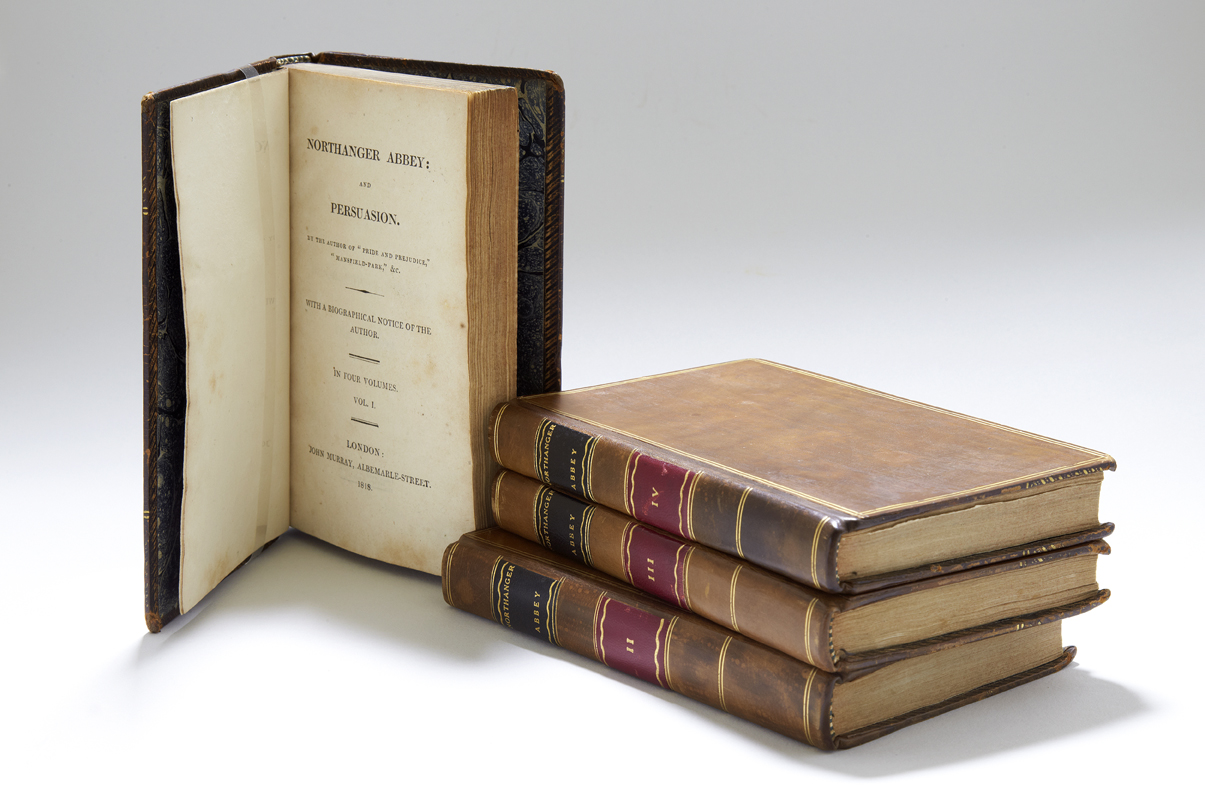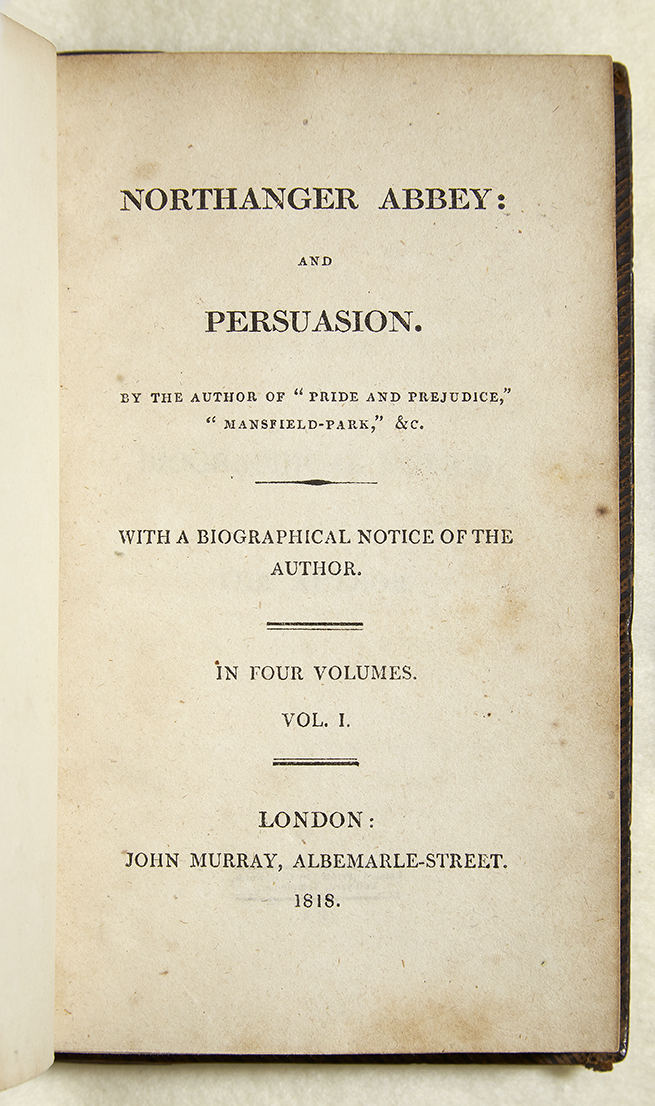Northanger Abbey
Northanger Abbey was the first of two novels published posthumously in December 1817, six months after Jane’s death. The story follows Catherine Morland, the seventeen-year-old daughter of a country clergyman, who is now ‘in training for a heroine’. Leaving her village home to enjoy a season in Bath, Catherine embarks on a series of adventures, encountering romance, friendship, fashion and social ambition. Catherine is an ardent reader of gothic novels, and at times lets her imagination get the better of her, but as the story progresses she learns to distinguish truth from fiction. The novel tackles themes of marriage, social ambition, reading, taste and the picturesque, and throughout it explores and satirises the gothic novels of terror that were so popular in the 1790s.
Jane Austen first drafted the manuscript in Steventon, possibly as early as 1794, and completed it in 1798-1799, at which time it was called Susan. In 1803, Henry negotiated via his lawyer to sell the manuscript to London and Bath booksellers Crosby & Co for £10, on the understanding that it would be published soon. However, this did not happen. In 1809 Jane wrote to them directly, under a pseudonym, asking for the novel to be published, but Crosby maintained that he held the copyright and that she had no legal right to publish elsewhere. Eventually, in 1816, Henry bought the manuscript back for the original price of £10. Jane made some revisions to the novel in 1816-1817, changing the name of the heroine and the working title to Catherine, since another novel called Susan had been published in 1809.
The work was renamed Northanger Abbey and publication arranged after Jane’s death in a four-volume set with Persuasion. Northanger Abbey took up the first two volumes.


